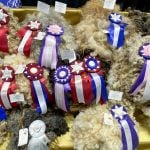MEACHAM, Sask. – Jerry and Janice Sopatyk have their reasons for calving in the icy depths of January.
Producing calves that reach market weight in August when the prices are right is one reason. So is the advantage of producing yearling purebred Simmental bulls that are ready for customers’ spring breeding programs.
But the main reason is that Janice Sopatyk, besides playing an active role on her family’s grain and cattle farm near Meacham, is the community’s veterinarian. She finds herself in high demand during the more traditional March to May calving season.
Read Also

Rising vegetable oil demand may offset bad biofuel news
Global biodiesel/renewable diesel production is expected to decline for the first time in a decade. Bad timing for a canola industry looking for new markets.
“That’s why we’re calving now,” she said. “We can get our calving out of the way before everybody else gets going on it.”
While being both a veterinarian and cattle producer requires these kinds of accommodations, there are advantages.
“Everybody bugs (Jerry) that he gets free vet service,” she said with a laugh.
Sopatyk grew up at Aberdeen, Sask., and graduated from the Western College of Veterinary Medicine in 1978.
After working for practices in Weyburn, Sask., and Taber, Alta., she joined an embryo transplant service in Saskatoon from 1980-87.
When it closed, she moved back to Aberdeen and started her own practice, Big ‘N Small Veterinary Services. A year later she married Jerry and moved herself and the practice to his farm.
For the first eight years she treated cats and dogs in the house and the livestock on her clients’ farms.
In 1996, the couple built a 14 x 24 metre clinic on the farmyard, which has improved her working conditions. Producers with cows that require assistance also appreciate the facility.
“They quite often bring them in to calve. Usually it’s a bit better facilities. At least it’s above zero and there’s running water.”
She said 75 percent of her business is cattle, which means her practice is much more seasonal than her colleagues in the cities who treat small animals. Life gets hectic for four months in the spring and then the pace slows in the summer when the cattle go onto pasture.
She attributed this to a smaller rural population.
“There’s 80-some people in Mea-cham and there’s probably 200 or 300 each in Viscount and Colonsay. Then you have Saskatoon, which is 200,000 people, so it’s hardly any wonder I don’t do as much small animal work.”
Besides providing more business, a predominantly small animal practice can also be more lucrative because economics don’t play a big role in owners’ decisions.
“If your dog breaks his leg you fix it, but if it’s your cow, you probably make hamburger out of it.”
Running a one-person practice in the country can sometimes play havoc with her private life.
“Especially in calving season, I never plan to do too much.”
Raising two children, now 12 and 14, has also been a challenge.
“When they were younger, we had a lady in town who did a lot of babysitting for us because Jerry couldn’t always do it either.”
The seasonal nature of her business has its advantages, since it gives her time to help with harvest, when life really gets hectic on the farm.
She also has time for educational work, being closely involved in the cattle industry’s voluntary on-farm food safety program developed through Quality Starts Here. She works with the local forage producers club, talking about the quality program as well as subjects such as calving and vaccinations.
She’s on the speakers bureau for Quality Starts Here and the national livestock identification program, travelling across the province to make presentations.
She works with the local school’s career days and is a 4-H leader.
Next month she plans to take the Quality Starts Here auditors course, which will allow her to visit participating farms and verify that they are following the program.
She said her farm-vet practice arrangement is not unique, and knows several other women who are doing the same thing.
“It’s not exactly your traditional system, but it works.”














